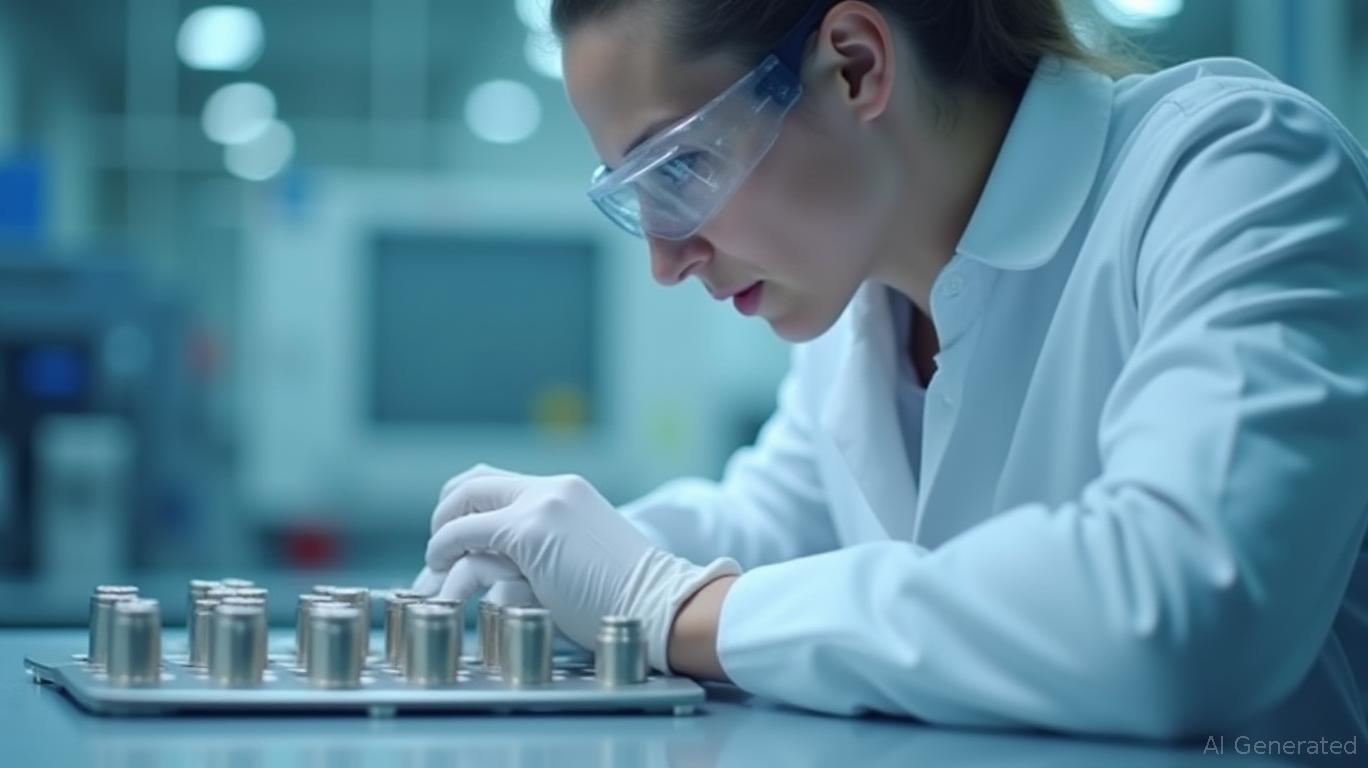Wacker Chemie: A Polysilicon Leader Navigating Solar Market Volatility
In a world where global trade tensions and overcapacity in China's solar sector have upended markets, Wacker Chemie
(WACKER) stands out as a beacon of strategic resilience. The German chemical giant, renowned as the global leader in hyperpure semiconductor-grade polysilicon, has deftly pivoted to capitalize on surging demand for semiconductors while weathering headwinds in its solar business. With a focus on specialty products and disciplined capacity expansions, Wacker is positioning itself to outperform in 2025—and beyond—despite near-term challenges.Semiconductor Growth: The Engine of Resilience
Wacker's semiconductor-grade polysilicon division has emerged as the crown jewel of its portfolio. The company supplies 90% of the world's electronics-grade polysilicon, a critical feedstock for silicon wafers used in semiconductors. In 2025, this segment is on track for “considerable volume growth”, with sales projected to reach €1.0–1.3 billion—up significantly from 2024. This momentum is driven by long-term structural demand for semiconductors, fueled by the EU's European Chips Act, the U.S. Inflation Reduction Act, and the global push for digitalization, artificial intelligence, and electric vehicles.

Solar Sector Struggles: A Necessary Trade-Off
While Wacker's semiconductor business thrives, its solar-grade polysilicon division faces headwinds. Chinese overcapacity—driven by state-backed subsidies—has flooded global markets, depressing prices and volumes. Wacker's solar sales declined 18% year-over-year in early 2025, and EBITDA dropped 40% in 2024 due to this oversupply. Compounding the issue are U.S. trade policies, including anti-dumping tariffs on solar imports from Southeast Asia, which have stifled demand.
Yet Wacker's strategy prioritizes margin preservation over volume growth, focusing on high-margin specialty products. This disciplined approach shields its profitability from cyclical solar market swings.
Capacity Expansions and Specialization: A Shield Against Volatility
To solidify its semiconductor leadership, Wacker is investing €200 million in a new production line at its Burghausen facility, set to begin operations by mid-2025. This expansion will boost semiconductor-grade polysilicon capacity by 20%, ensuring it can meet surging demand without overexposing itself to solar sector risks.
The company's specialty product focus further insulates it from commodity price fluctuations. Beyond polysilicon, Wacker produces advanced silicones for LED lighting, healthcare, and automotive applications—segments with stable demand and premium pricing power.
Navigating Trade Uncertainties
Global trade tensions loom large, but Wacker's geographic diversification and customer relationships mitigate risks. While U.S. tariffs on solar panels hurt Chinese competitors, Wacker's semiconductor clients—semiconductor manufacturers in Europe and the U.S.—are shielded from such trade barriers. The EU's push to reduce reliance on Asian chipmakers also creates tailwinds for Wacker's European production hubs.
Investment Thesis: A Long-Term Play on Digitalization
Wacker's stock has underperformed in 2025 due to solar sector headwinds, but this presents a buying opportunity for investors with a multi-year horizon. Key catalysts include:
1. Semiconductor demand growth: The global semiconductor market is projected to reach $747 billion by 2030, driven by AI, 5G, and EVs.
2. Burghausen's capacity ramp-up: The new line will solidify Wacker's supply dominance for advanced chips.
3. Margin stability: Specialty products and cost discipline will buffer earnings against solar volatility.
Risk Factors: Prolonged solar overcapacity, geopolitical disruptions, or a semiconductor demand slowdown could delay recovery.
Conclusion: A Pioneering Bet on the Future
Wacker Chemie is no ordinary chemical company—it's a materials innovator at the intersection of energy transition and digitalization. While solar sector turbulence tests its near-term performance, its semiconductor leadership and strategic focus on high-margin specialties make it a compelling long-term investment. For investors willing to look past near-term noise, Wacker's ability to navigate volatility and capitalize on megatrends positions it as a standout play in the global polysilicon landscape.
Investment recommendation: Consider a gradual build-up of exposure to WACKER, with a 3–5 year holding period.

Comments
No comments yet